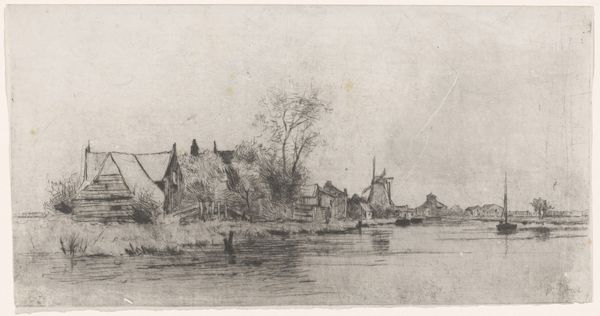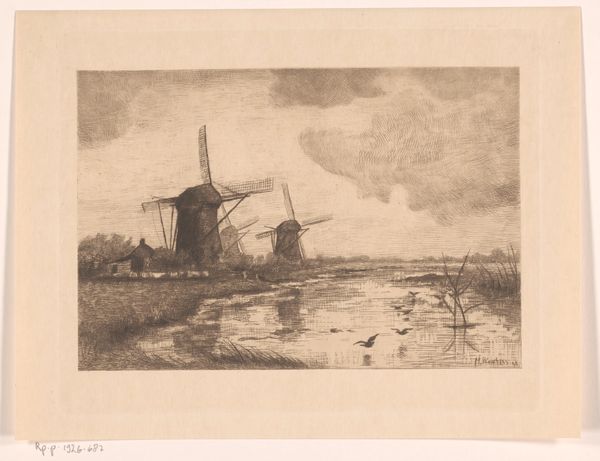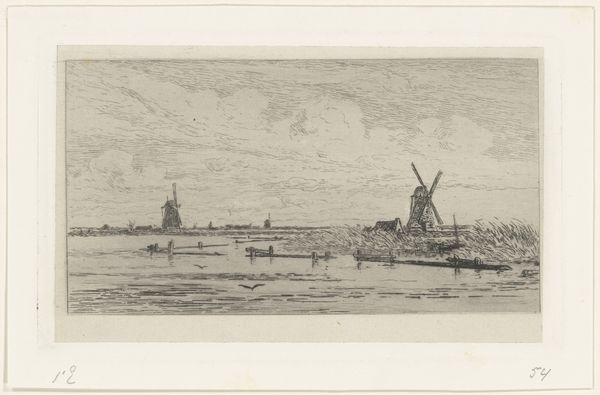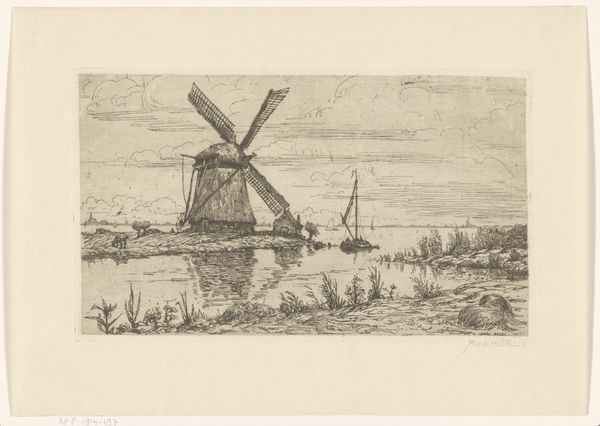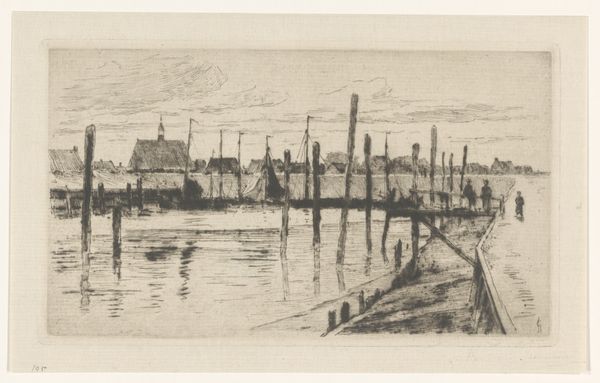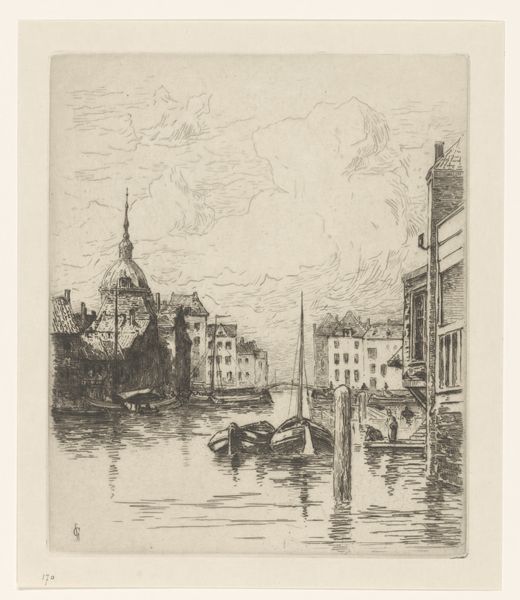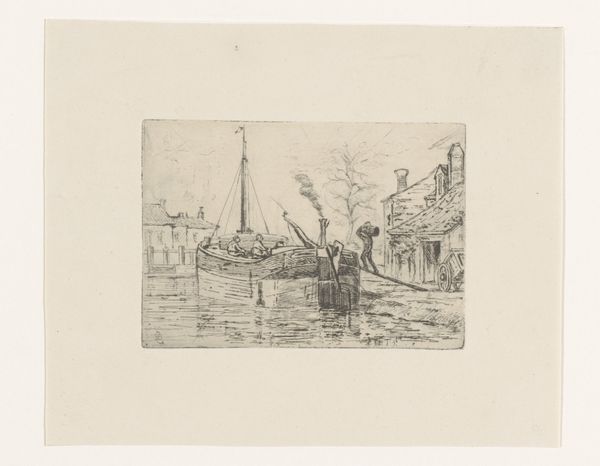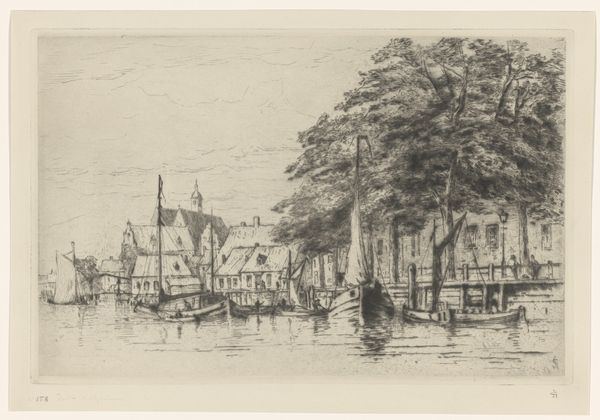
etching
#
etching
#
landscape
#
etching
#
cityscape
Dimensions: height 160 mm, width 233 mm
Copyright: Rijks Museum: Open Domain
Editor: So this etching is titled “Gezicht op het Spaarne in Haarlem,” dating from around 1884, by Carel Nicolaas Storm van 's-Gravesande. It's a landscape that has a quiet, almost somber mood for me. What do you see in this piece, in terms of its wider cultural significance? Curator: I see more than just a picturesque landscape; I see a snapshot of labor and environmental interaction within a specific social framework. The figure wading through the water is critical. Are they merely crossing the river, or are they performing some kind of labor? Consider the context: industrialization was transforming the Netherlands during this period, impacting waterways and livelihoods. Editor: That's interesting, I hadn't thought about the labor aspect. The figure seems isolated, almost vulnerable, but also determined. How does the etching technique itself contribute to your interpretation? Curator: The etching process, with its fine lines and subtle gradations, allows van 's-Gravesande to depict not only the scene but also the atmospheric conditions. It evokes the social impact of modernization on the everyday lives of ordinary people who were tied to the waterways for sustenance. Look closely at how the light plays on the water. Is it celebratory or highlighting labor? Editor: It's definitely less romantic when viewed through the lens of labor and environmental impact. More of a statement, maybe? Curator: Precisely. And whose stories are traditionally prioritized in landscapes? Looking at this, perhaps van 's-Gravesande is hinting at another perspective to the classic landscape genre. What does this work make *you* think about, considering our contemporary issues with labor? Editor: It makes me think about the ongoing struggle for workers' rights, even today, and how landscapes are never neutral spaces, but always tied to the lives and struggles of the people who inhabit them. I will certainly think about etchings differently from now on! Curator: Indeed. It is by making such connections that the art of the past truly speaks to our present.
Comments
No comments
Be the first to comment and join the conversation on the ultimate creative platform.

